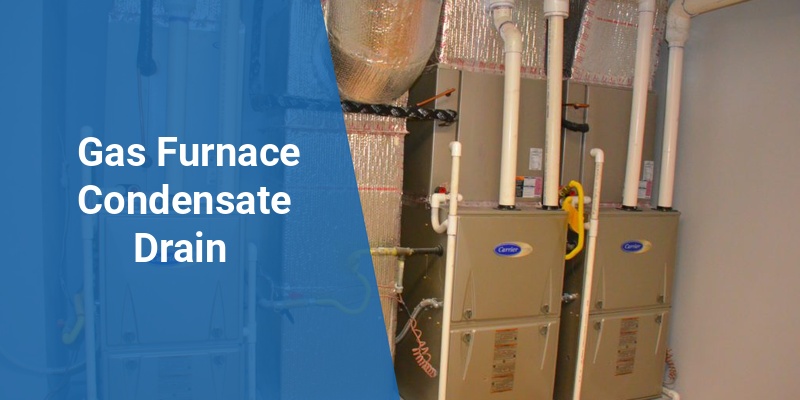Gas furnace condensate drains are essential components in modern high-efficiency heating systems. These drains remove the water produced during combustion to prevent damage and maintain furnace efficiency. Understanding the function, maintenance, and common issues related to condensate drains helps homeowners ensure their furnaces operate safely and effectively.
| Topic | Key Points |
|---|---|
| What Is a Gas Furnace Condensate Drain? | Removes acidic water produced from gas furnace combustion |
| How It Works | Collects condensate and routes it safely out of the home |
| Maintenance Tips | Regular cleaning, flushing with vinegar, checking for blockages |
| Common Problems | Clogs, leaks, drain pan cracks, improper slope |
| Troubleshooting Signs | Furnace shutdowns, water leaks, error codes |
What Is a Gas Furnace Condensate Drain?
A gas furnace condensate drain is a pipe or tubing system that removes the water, known as condensate, produced when a high-efficiency gas furnace operates. These modern furnaces extract extra heat by condensing water vapor from exhaust gases, creating liquid water that needs to be safely drained away. The condensate is acidic and requires proper disposal to avoid corrosion or water damage.
How Gas Furnace Condensate Drains Work
High-efficiency gas furnaces use a secondary heat exchanger that cools exhaust gases to extract additional heat. This cooling causes water vapor in the exhaust to condense into liquid form. The condensate collects in a drain pan under the heat exchanger and flows through the condensate drain line. The drain line directs the water to a nearby drain, sump pump, or outside the home, preventing accumulation and damage.
Materials and Design
- Typically made from PVC or polyethylene tubing due to corrosion resistance.
- Must be sloped downward to ensure proper flow.
- Often connected to a condensate pump if gravity drainage isn’t possible.
Importance of Proper Maintenance
Maintaining the condensate drain is crucial for furnace performance and longevity. Blockages, clogs, or leaks can cause water to back up, triggering furnace shutdowns or water damage in the home. Regular maintenance ensures the drain remains clear and functional, preventing expensive repairs.
Recommended Maintenance Practices
- Visual Inspection: Check the drain pan and lines for cracks, leaks, or standing water monthly during heating season.
- Flushing and Cleaning: Flush the drain line with a mixture of vinegar and water every few months to dissolve mineral buildup and prevent clogs.
- Ensure Proper Slope: Verify the drain line slopes downward to facilitate proper water flow.
- Clear Inlets and Outlets: Remove debris that could block the drain openings on either end.
Common Problems With Gas Furnace Condensate Drains
Despite being low-maintenance, condensate drains can develop issues that require attention:
| Issue | Cause | Potential Effects |
|---|---|---|
| Clogs and Blockages | Mold, algae, mineral deposits, debris | Drain backups, water leaks, furnace shutdowns |
| Cracked or Damaged Drain Pan | Age, corrosion, improper installation | Water leaks and damage to surrounding areas |
| Improper Drain Line Slope | Incorrect installation or settling | Water pooling, slow drainage, backups |
| Frozen Drain Line | Cold temperatures, poor insulation | Blocked drainage, water overflow |
Troubleshooting Gas Furnace Drain Issues
Homeowners should watch for signs that the condensate drain is malfunctioning. Prompt diagnosis and addressing issues prevent furnace failure and property damage.
Signs of Condensate Drain Problems
- Unexpected furnace shutdowns or failure to start
- Water pooling around the furnace base or drip pan
- Musty odors indicating mold or stagnant water
- Visible leaks or water damage near the furnace
- Error codes on furnace control board related to drainage problems
DIY Troubleshooting Steps
- Inspect the drain line for visible blockages or leaks.
- Flush the condensate drain using a vinegar solution to clear buildup.
- Check that the line is properly sloped and secure.
- Ensure outdoor drain points are not blocked by debris or ice.
- If equipped, empty and test the condensate pump for proper operation.
When to Call a Professional
Some furnace condensate drain issues require expert intervention. Homeowners should contact an HVAC technician if:
Call 888-906-9139 for Free Local HVAC Quotes – No Obligation, Just Savings!
- The drain pan or lines are severely cracked or corroded.
- Drain line replacement or rerouting is necessary.
- Persistent clogs or leaks remain after DIY attempts.
- The furnace continuously shuts off due to drainage problems.
Licensed technicians have the tools and knowledge to safely repair or replace condensate drain components and restore furnace operation.
